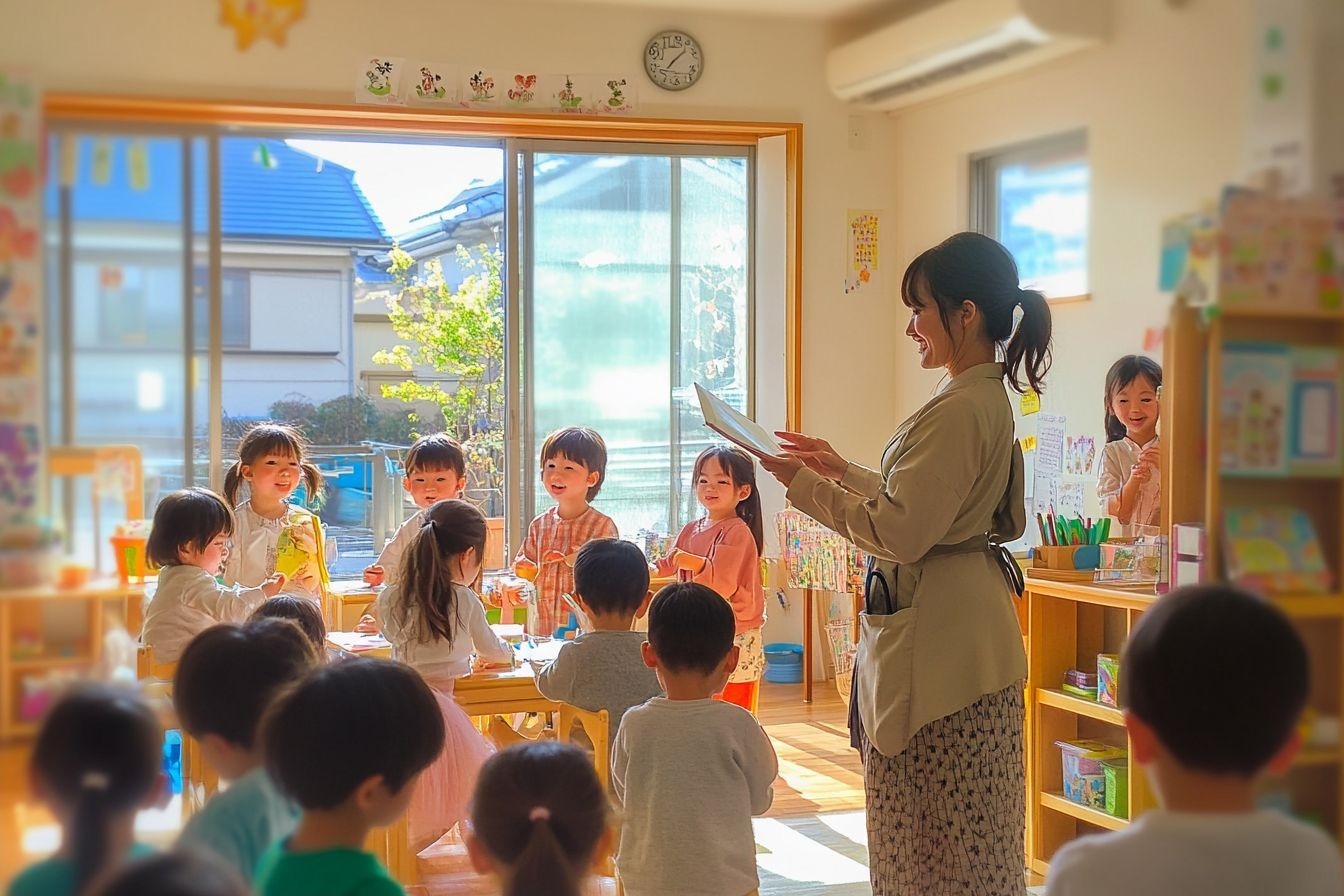Daycare and Preschool Enrollment: What to Expect in 2025
Finding the right early childhood education setting for your child involves understanding application timelines, enrollment procedures, and what makes programs stand out. As we move into 2025, daycare centers and preschools continue to evolve, offering families more options while also presenting new challenges in securing spots. This guide walks you through the essential steps and considerations for navigating the enrollment process successfully.

The landscape of early childhood education continues to evolve, with 2025 bringing significant changes to daycare and preschool enrollment processes. Parents seeking quality care and education for their young children will encounter new considerations ranging from digital application systems to enhanced curriculum standards. The competitive nature of securing spots in quality programs makes understanding these changes crucial for families planning their children’s educational journey. Proactive preparation and knowledge of what lies ahead can make the difference between securing an ideal placement and scrambling for alternatives.
What Should Parents Look for When Evaluating Programs?
When evaluating daycare and preschool options for 2025, parents should prioritize programs with clear educational philosophies that align with their family values. Look for centers that demonstrate a balance between structured learning and play-based approaches, as research continues to support the importance of both in early childhood development.
Facility safety standards are evolving, with many programs implementing advanced security systems and health protocols that became standard practice following earlier public health challenges. Parents should inquire about teacher-to-child ratios, which remain a critical quality indicator—lower ratios generally mean more individualized attention. Additionally, teacher qualifications are increasingly important, with more programs requiring specialized early childhood education degrees or certifications.
Technology integration will be another key consideration in 2025. Programs incorporating age-appropriate technology tools that enhance learning rather than replace human interaction demonstrate forward-thinking approaches. However, parents should ensure this technology use is balanced with ample outdoor time, physical activity, and social interaction opportunities.
Understanding Costs and Comparing Programs
The financial aspect of daycare and preschool enrollment continues to be a significant consideration for families. In 2025, the cost structure of early childhood education programs is projected to reflect several market factors, including increased operational costs, enhanced teacher qualifications, and technological investments.
Many programs are moving toward more transparent pricing models, with tiered options based on attendance schedules, age groups, and included services. Some facilities offer core programs with add-on options for specialized activities like language immersion, STEM education, or arts programming. This à la carte approach allows families to customize care based on their children’s needs and their budget constraints.
The gap between nonprofit and for-profit programs may continue to widen, with nonprofit centers often providing more scholarship opportunities but potentially having longer waitlists. Meanwhile, employer-sponsored childcare benefits are expanding in many regions, offering subsidies or priority enrollment as workplace benefits.
| Program Type | Average Monthly Cost (2025 Projection) | Typical Inclusions | Additional Costs |
|---|---|---|---|
| Full-time Traditional Preschool | $1,200-$1,800 | Core curriculum, meals, basic supplies | Extended hours, specialized programs |
| Montessori/Specialized Approach | $1,500-$2,200 | Specialized curriculum, materials, meals | Application fees, uniforms if applicable |
| Part-time Programs (3 days/week) | $800-$1,200 | Limited curriculum hours, may include meals | Extended care, holidays |
| Cooperative Preschools | $600-$1,000 | Basic program with parent participation | Volunteer hours requirement, fundraising |
Prices, rates, or cost estimates mentioned in this article are based on the latest available information but may change over time. Independent research is advised before making financial decisions.
What Defines the Future of Early Childhood Education in Daycares and Preschools?
The future of early childhood education in 2025 will be characterized by several emerging trends. Personalized learning approaches are gaining momentum, with programs increasingly using observation and assessment tools to create individualized development plans for each child. This shift recognizes that children develop at different rates across various domains and benefit from customized support.
Environmental sustainability is becoming embedded in curriculum design, with more programs incorporating nature-based learning, outdoor classrooms, and ecological awareness into daily activities. These approaches not only address growing environmental concerns but also respond to research showing the developmental benefits of nature connection for young children.
Cultural responsiveness and diversity education will be more intentionally integrated into quality programs. Centers are expanding their curricula to include diverse perspectives, multilingual materials, and celebration of various cultural traditions. This reflects both changing demographics and a growing recognition of the importance of early exposure to diversity.
Mental health and social-emotional learning will receive unprecedented focus in 2025 programs. The integration of mindfulness practices, emotional regulation skills, and conflict resolution techniques even for the youngest learners acknowledges the critical importance of these foundational skills for lifelong wellbeing.
What Steps Help Secure a Spot at Daycares and Preschools in 2025?
Securing a spot at desirable daycare and preschool programs in 2025 will require strategic planning and early action. Many popular programs will maintain waitlists extending 12-18 months, making it essential for parents to begin their search well before their intended enrollment date. Creating a timeline that begins with research during pregnancy or at least a year before desired enrollment will position families advantageously.
Virtual tours and information sessions will continue to be standard offerings alongside traditional in-person options, allowing families greater flexibility in exploring potential programs. Parents should take advantage of both formats to gain comprehensive insights into program environments and philosophies.
Building relationships with potential programs through attending open community events, parent workshops, or playgroups hosted by centers can provide informal opportunities to learn more about programs while demonstrating genuine interest. Some centers consider family fit and engagement when making enrollment decisions.
Flexibility with start dates or attendance schedules may increase enrollment opportunities. Programs often have more availability for part-time spots or mid-year openings, which can serve as entry points for families willing to adapt their arrangements temporarily.
How Does the Application Process Work for Daycare Centers and Preschools in 2025?
The application process for daycare centers and preschools in 2025 will be increasingly digitized, with many programs utilizing comprehensive enrollment management systems. These platforms typically allow parents to submit applications, upload required documents, schedule tours, and track their position on waitlists—all through secure online portals.
Application requirements will likely include standard documentation such as immunization records, emergency contact information, and developmental questionnaires. However, more programs are adding components like family values statements or parent interviews to assess alignment between family and program philosophies.
Priority enrollment systems will continue to influence acceptance decisions. Siblings of current or former students, children of staff members, and families affiliated with partner organizations (like employers or religious institutions) often receive preferential consideration. Understanding these systems can help parents realistically assess their chances at specific programs.
The timeline for applications varies by program type and location, but generally follows a predictable annual cycle. Many private preschools begin accepting applications for the following academic year in the fall, with decisions communicated by early spring. Year-round daycares may process applications on a rolling basis, but still maintain structured waitlist systems.
Parents should prepare for application fees ranging from $50-$200 per program in 2025, with some competitive programs requiring deposits of $500-$1,000 to secure a spot once accepted. These financial commitments reflect the competitive nature of quality early childhood education enrollment and help programs manage their admissions processes.



